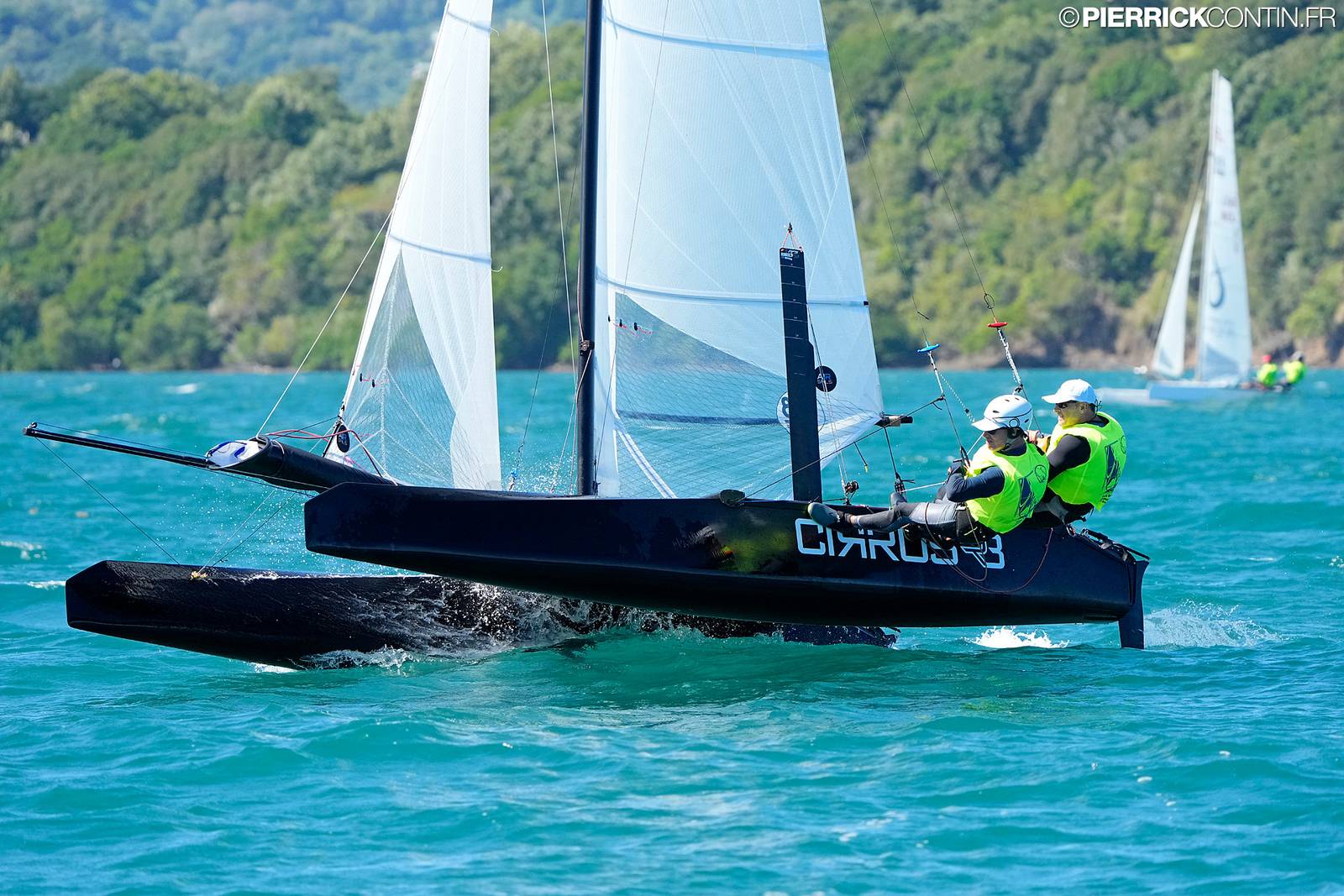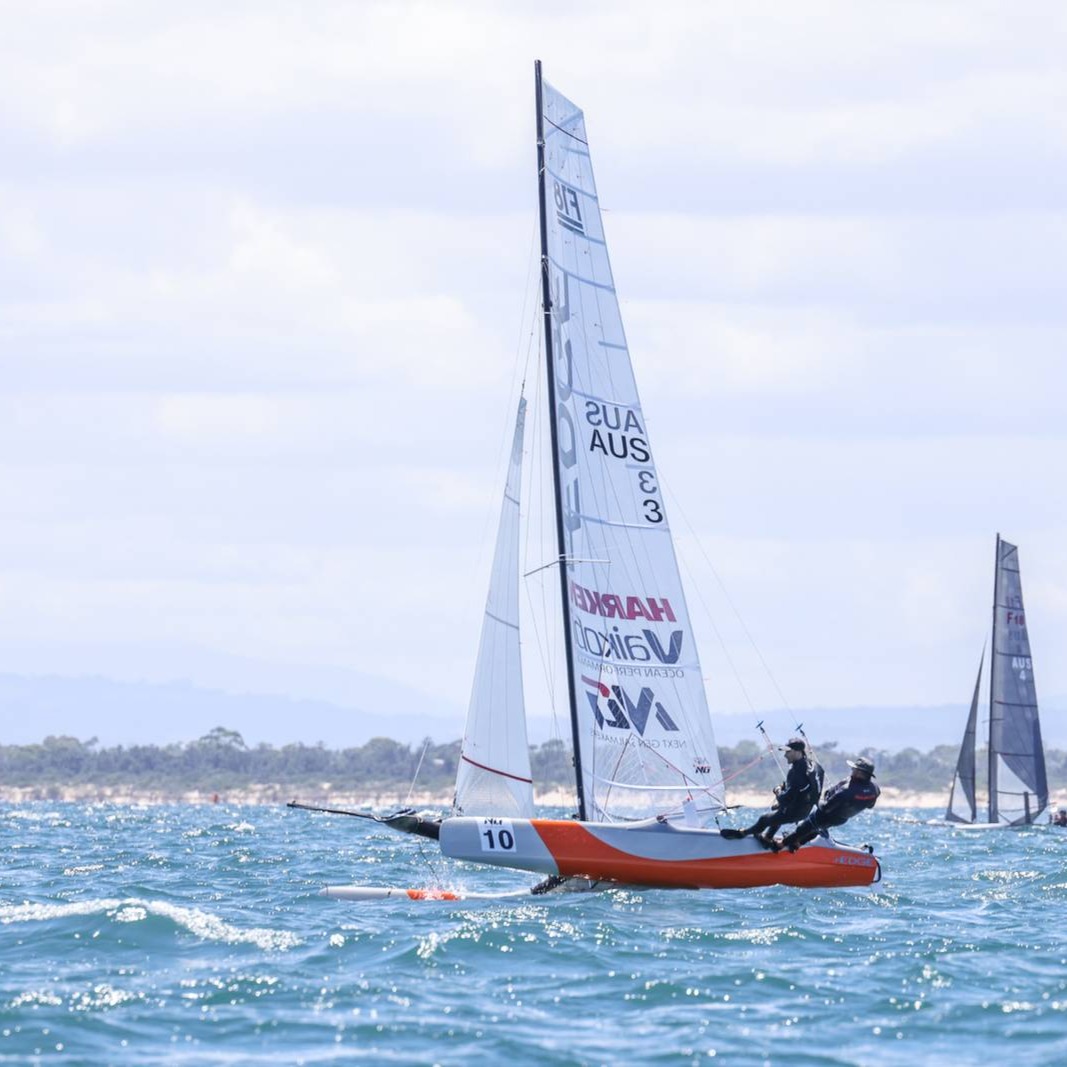Glenn Ashby on trimming ETNZ Wing
 Best double handed crew ever? Best single handed helm ever? Beyond all the R&D at the ETNZ camp, having Glenn Ashby as their wing trimmer is one this team greatest assets.
Best double handed crew ever? Best single handed helm ever? Beyond all the R&D at the ETNZ camp, having Glenn Ashby as their wing trimmer is one this team greatest assets.
Also not many things in life are pure luck, Glenn regarding foiling : “It had been something that we had been working on for a very long time and to see it at AC72 scale was pretty awesome and a great feeling.”
————
From ETNZ blog: “Glenn Ashby (pictured above with the wing sheet in his hand) describes his job as wing trimmer on the AC72 as a bit like driving a truck.
He is talking a really big truck with a 32-speed gearbox and it’s traveling up and down a series of hills and turns.
The driver, he says, must always think ahead, two or three moves ahead. And that’s what he does on board the AC72.
Glenn’s changing gears (adjusting the wing trim) almost constantly, either with the Driving a truck + trimming the wingsheet or with the hydraulics so there’s never a time when he’s not thinking, looking for the breeze ahead and changes in wind patterns – thinking about the next gear change to achieve best performance.
The wing is set up differently for different modes – upwind a low fast mode or high, slower mode for instance. Racing downwind, the wing set up has a huge influence on the boat’s performance and must be used accurately with the front sails, making for dozens of small adjustments throughout the leg.
“Anticipating the next gear change and executing it well, is where big gains can be made over your opponent.”
“Dean Barker, James Dagg, Ray Davies and I work closely on boat speed – effectively managing the speed and angle of the boat. It’s a team effort for best round-the-track speed and we all need to be on the same page.”
“It’s like sailing a double-handed dinghy in a way – the forward hand controls the mainsheet and the helm steers and they work together to extract maximum speed. It’s a bit like that on the AC72, but with a lot more buttons and strings to play with.
“To be effective we have to have good communication so we each know instinctively what the other is thinking. That’s one of the reasons time on the water is extremely valuable.”
Glenn recalls the first time they got up on the foils downwind. “I’ll never forget looking through the tramp at the daggerboard going through the water – and knowing it was supporting the entire boat and the crew at close to 40 knots.
“It had been something that we had been working on for a very long time and to see it at AC72 scale was pretty awesome and a great feeling.”
“Part of me was saying ‘that’s not right’ and the other part was saying ‘this is exactly how it’s supposed to be. By getting rid of a lot of the drag the hulls are effectively just going along for the ride and something to sit on!.”
He admits to having more than a passing thought then about “knowing if the foil goes bang or we have a hydraulic failure it would be very easy to capsize the boat.”
He says the team is pushing boundaries of foil and hull technologies to places where they have “never been pushed before. It took a massive effort by a lot of people to get the boat up and foiling stably – a massive full team effort.”
“Now as a sailing team, we must continue to learn how to sail the boat to its full potential and keep pushing ourselves and the boundaries to the limits. A lot of the time we’re pushing into the unknown, but that’s what makes what we are doing so special. Hopefully the path we have chosen is the correct one.”




























I just heard that my great sailing friend and former CEO of Hobiecat Europe has passed. May The endless oceans…
...Report was sent by an F18 Sailor, if you want Hobies reported send your own, we'll publish as usual. Cheers.
Looks like in your report the Hobies are not really present. Suggest to rewrite the article.
Thanks for the great report Wik. Great battle.
If I correctly read the results the overall winner this year is a Hobie16